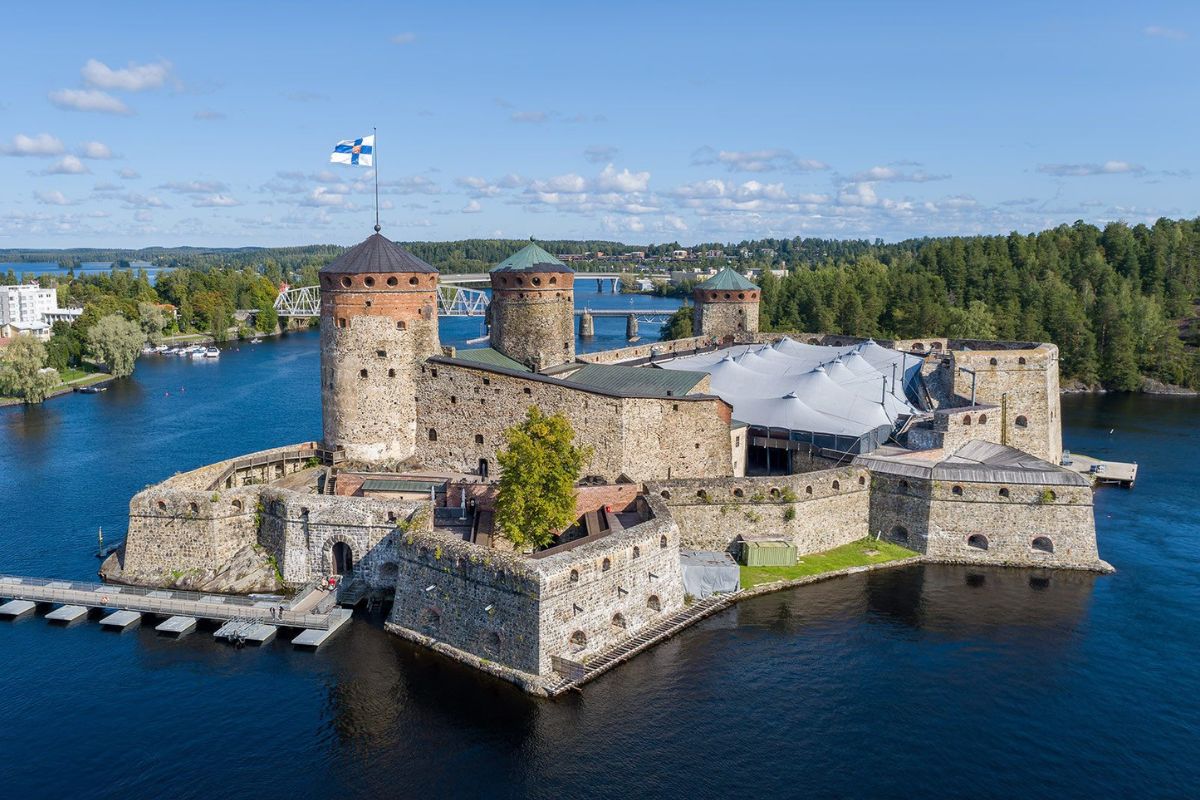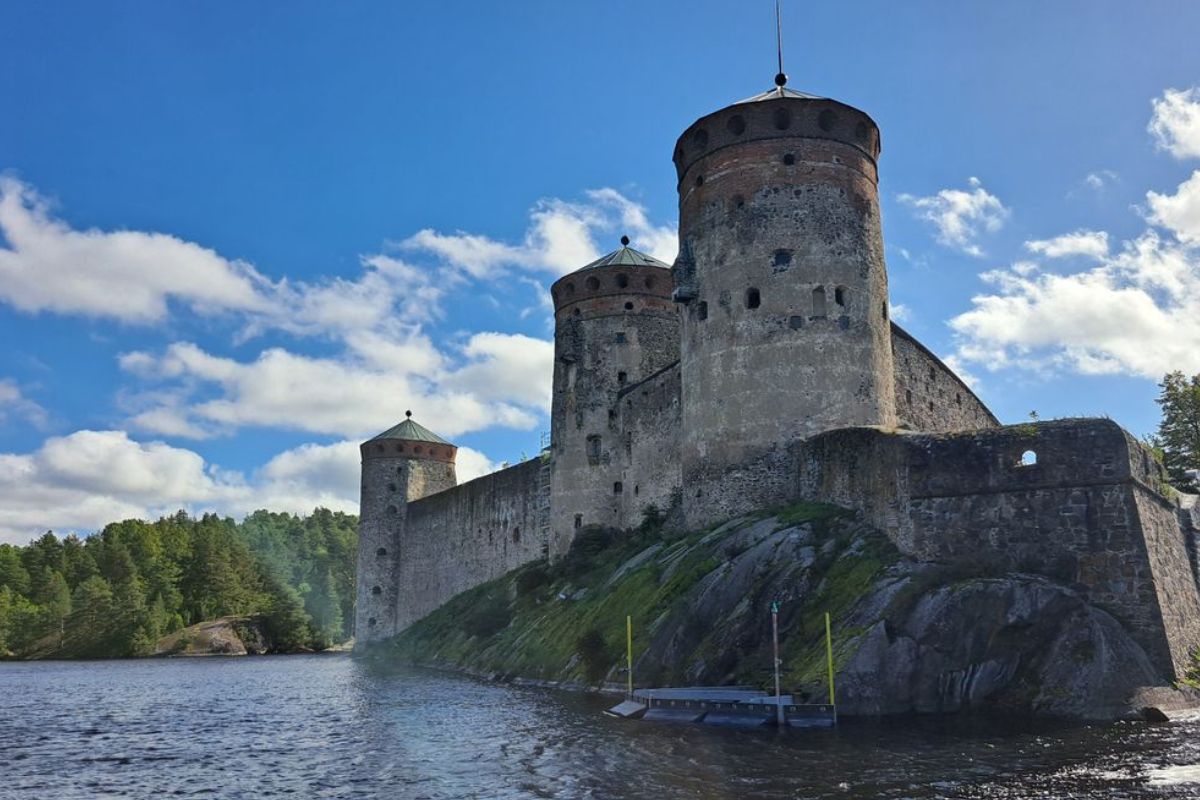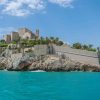Olavinlinna Castle
Olavinlinna Castle stands as one of the most iconic and picturesque medieval fortresses in Northern Europe. Built in the 15th century, this stone stronghold rises from a rocky islet in the middle of the Kyrönsalmi strait in Savonlinna, Finland. It was constructed by Erik Axelsson Tott, a Danish-born nobleman in Swedish service, to protect the strategic Savo region against eastern threats. Its robust architecture, dramatic location, and long-standing military purpose make it a symbol of Finnish resilience and medieval ingenuity.
Olavinlinna, or St. Olaf’s Castle, is the northernmost medieval stone castle still standing and in relatively original form. Named after the Norwegian patron saint St. Olaf, the castle carries a legacy of Christian valor and Scandinavian defense. With its three massive towers, thick walls, and centuries-old history, it continues to draw admiration from visitors worldwide.
Location of Olavinlinna Castle
Olavinlinna Castle is situated in the town of Savonlinna, in the heart of the Finnish Lakeland. This region is known for its dense forests, crystalline lakes, and a rich blend of Scandinavian wilderness and cultural heritage. The castle itself rests on a small rocky islet in Lake Saimaa, Finland’s largest lake system.
Savonlinna lies in South Savo, a region famous for its natural beauty and deep connection to Finland’s medieval past. The surrounding landscape enhances the castle’s fairytale appeal. Forested shores and calm waters provide a striking contrast to the fortress’s stone mass. During winter, the lake often freezes, adding another dimension of beauty and serenity.
The town of Savonlinna is small but vibrant. It thrives during the summer season, especially when tourists flock to the area for lake cruises and the world-renowned Savonlinna Opera Festival. The castle, at the center of this activity, becomes a focal point for art, music, and historical curiosity.

History of Olavinlinna Castle
Olavinlinna Castle was founded in 1475 during a period of intense military tension between the Kingdom of Sweden and the expanding Grand Duchy of Moscow. Erik Axelsson Tott recognized the strategic value of the Saimaa waterways and sought to establish a permanent military presence in the region. Construction began with defensive needs in mind, particularly to withstand cannon fire, which was becoming more prevalent.
The original design featured thick granite walls and three large towers. The architecture reflected the latest developments in European military construction. Over the next century, additional bastions and curtain walls were added to bolster its defenses. The castle withstood several sieges, including attacks from Russian forces during the Russo-Swedish Wars.
In 1714, during the Great Northern War, the castle fell into Russian hands and remained under Russian control for over a century. During this time, it served administrative and military functions. Although no longer strategically vital by the 19th century, the castle remained in use and underwent some restoration. During peacetime, Olavinlinna began to attract attention for its architectural beauty and historical value. In the 20th century, a large-scale restoration was carried out to preserve the structure. Much of the work aimed to return the castle to its 15th-century appearance. The original chapel, towers, and parts of the inner courtyard were restored with care and authenticity.

Current status
Today, Olavinlinna Castle stands as one of Finland’s most visited historical sites. It is open to the public year-round, with guided tours offered in several languages. These tours cover the castle’s construction, military use, and stories from its long and dramatic history. Visitors can explore its winding corridors, defensive towers, and museum exhibits housed within.
The castle’s most famous modern role is as the venue for the Savonlinna Opera Festival, held every July. This internationally acclaimed event transforms the medieval fortress into a grand concert hall. The natural acoustics of the stone walls and the atmospheric setting create a unique experience for opera lovers from around the world.
Inside, the castle also hosts exhibitions on medieval life, Finnish military history, and religious artifacts. There are interactive displays suitable for families and educational groups. The courtyard and the towers are accessible to visitors, offering panoramic views over the lake and forested landscape. Olavinlinna is managed by the Finnish Heritage Agency, which oversees its conservation and public accessibility. The structure remains well-preserved thanks to ongoing maintenance and careful restoration practices. Winter events and thematic tours keep the castle active even during the off-season.
Accessibility is also a priority. The site includes pathways, signage, and services designed for a wide range of visitors. Local amenities in Savonlinna, including hotels, restaurants, and boat tours, enhance the overall experience. Whether you visit during the summer festival or in the quiet of winter, Olavinlinna offers a unique journey into Nordic history. This majestic stone fortress continues to inspire. Its fusion of medieval architecture, natural setting, and cultural vitality makes it not only a historical monument but a living part of Finland’s national identity.
Admission
Community features
Castle features
Video
Location
Official website
Featured listings














